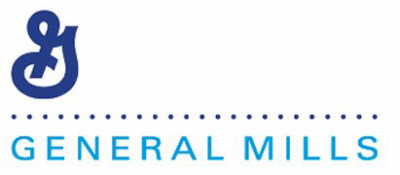Insights from Perrin Conferences
Traceability, tell-all genomics and authentication: The new reality for F&B litigation

Deeper supply chain traceability, genomic methods that can tell all and higher levels of authentication are the key trends to watch as F&B class-action lawsuits mount, Dr. Miller said. He was addressing a room full of food industry execs and attorneys during Perrin Conferences’ “Challenges Facing the Food and Beverage Industries in Complex Consumer Litigations.”
1. Deeper traceabilty. “More of our clients are asking us about digging deeper into their supply chain,” Dr. Miller said. Indeed as an increasing number of F&B products’ production lifecycles either originate or make stops in mines or chemical manufacturers before coming out the other side to consumer responses, nutrition, foodborne illness, and ultimately claims, litigation and insurance, “the point here is, in many instances, when you get back to suppliers of suppliers, many don’t even recognize they’re in the food business.”
This trend has many drivers, including the Food Safety Modernization Act (FSMA), insurance requirements, recalls, foodborne illness outbreaks and downstream litigation. “In fact, we’re even hearing more from our industrial clients that they want to know where all supplies and raw materials are coming from,” Dr. Miller noted.
Thus, the question becomes: “How far back do you have to go in understanding your supply chain and developing relationships with suppliers/subsuppliers to ensure you are ultimately producing safe food?” he asked. “It’s critical to review all agreements, verification programs, supplier quality assurance and also make sure employees have adequate training. Not all suppliers or their suppliers, for that matter, see themselves as being in the food business.”
2. Next-generation genome mapping. Although genomic methods like serology and phages have been used for hundreds of years—certain techniques that were introduced during the last 30 years are now being integrated into national, even global networks. Whole genome sequencing through PFGE (pulsed-field gel electrophoresis) and MLVA (multiple locus variable-number tandem repeat analysis, often used as an adjunct technique to PFGE) are enabling further DNA fragment separation and identification, both of which have huge implications for understanding and tracing foodborne illness.
MLVA can connect suspected, fast-evolving bacterial strains to an outbreak when they might look the same using other methods of DNA fingerprinting, such as PFGE. And when used as a complementary technique to PFGE, MLVA allowing scientists to see more detailed differences between bacteria that have similar PFGE patterns.
“These newer methods allow us to break these indistinguishable strains down even further,” Dr. Miller said. “It’s next-generation sequencing for greater specificity. As these techniques are harmonized and brought into the regulatory and public health area, genomic sequencing will enable more exquisite precision.”
3. Higher level of substantiation. Be it nutrient content, label claims, food/ingredient source, GRAS under attack or FSMA, this rather “broad” concept of higher substantiation runs deep, and can open the door to complex consumer litigation. “It’s affecting not only classical substantiation, but how we authenticate foods and validate processes,” Dr. Miller said. He provided a single case study as an example: a class action threat against a popcorn manufacturer over the calorie count of one serving of popcorn.
“The company marketing the popcorn had on label that one serving, or four cups, was 150 calories. This was disputed and class action threatened. The firm came to us asking if we could substantiate their calorie statement.”
As food in the US is measured by volume, not by weight like most countries, trying to determine the volume of a serving of popcorn—which varies in amount, often containing unpopped kernels—is not easiest thing, Dr. Miller noted.
“I’m convinced this is part of problem that everybody has in establishing what a serving size is and how many calories are in it,” he said. "One other factor: not all the carbohydrates found in popcorn are digestible, so we needed to subtract out fiber content from the caloric estimate, which for popcorn is fairly substantial.
“The bottom line is, we were able to convince plaintiffs that the company was right. But it’s incumbent on all to expend the necessary resources to prove you’re doing the right thing.”











